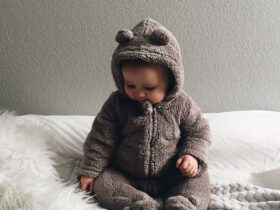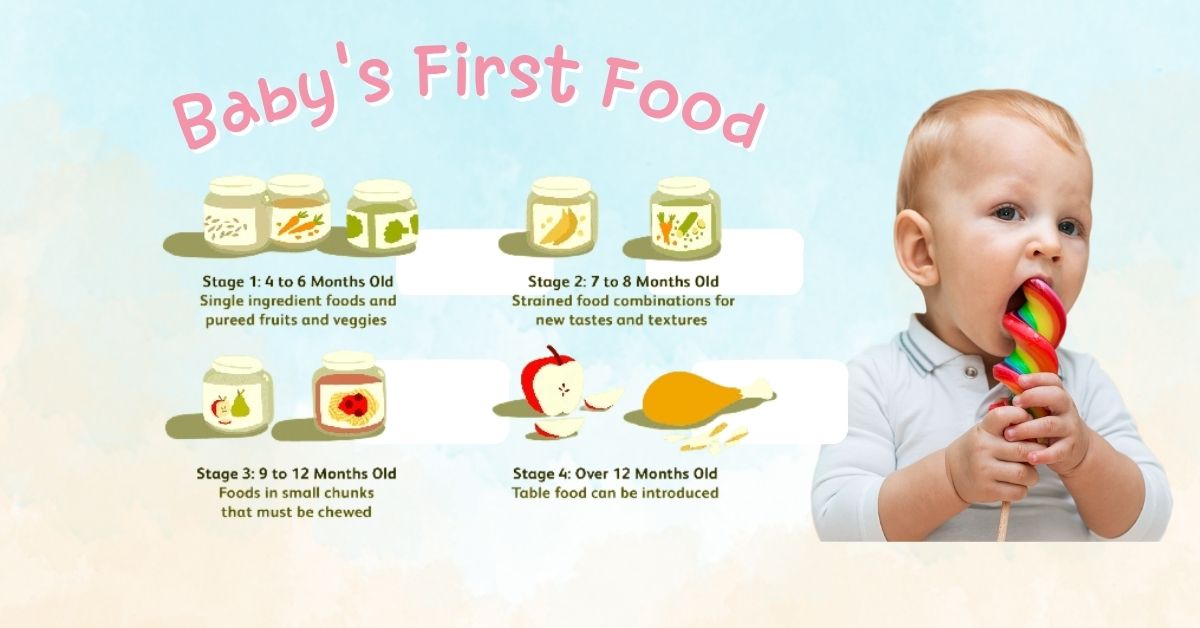Your baby is growing fast. After milk and soft puree, it is time for a new stage — Stage 2 baby food.
This stage helps your baby learn new tastes, textures, and nutrients. It is a very exciting part of your baby’s food journey.
But many parents ask:
- What is Stage 2 baby food?
- When should I start it?
- What foods are safe?
Don’t worry. This easy guide will help you understand everything in simple language.
What Is Stage 2 Baby Food?
Stage 2 baby food is the next step after Stage 1 purees.
In Stage 1, babies eat very soft, smooth food — like thin mashed banana or carrot puree.
In Stage 2, food becomes thicker and more filling.
The texture is not fully smooth. It has tiny soft lumps. This helps babies learn to chew and swallow.
Common Stage 2 foods include:
- Mashed fruits (banana, pear, apple, peach)
- Soft vegetables (carrot, sweet potato, pumpkin, peas)
- Grain blends (oatmeal, rice, quinoa)
- Protein foods (chicken, fish, egg, lentil puree)
So, Stage 2 food is a mix of fruit, vegetable, and protein in one meal.
When to Start Stage 2 Baby Food
Most babies start Stage 2 around 6 to 8 months old.
Your baby may be ready if:
- He or she can sit with support.
- The tongue movement is better.
- The baby finishes Stage 1 food easily.
- Baby shows interest in family food.
Always ask your pediatrician before starting Stage 2 foods. Every baby is different.
Why Stage 2 Food Is Important
Stage 2 baby food helps your little one grow strong and healthy.
Benefits include:
- Better nutrition: more vitamins, minerals, and protein.
- Improved chewing: baby learns how to handle thicker food.
- Taste learning: baby tries new flavors early.
- Healthy digestion: more fiber from fruits and veggies.
- Growth support: more calories and energy.
Good Stage 2 baby food builds strong bones, brain, and immunity.
What Makes Stage 2 Baby Food Healthy

When choosing or making baby food, check for these things:
Natural ingredients: Use fresh fruits, vegetables, grains, and meat.
No added sugar or salt: Babies don’t need extra flavoring.
No preservatives or artificial color.
Right texture: soft but not too smooth.
Organic options: safer and cleaner ingredients.
If you buy ready-made food, read the label. Look for ingredients like sweet potato, peas, lentils, chicken, and rice. Avoid long chemical names.
Types of Stage 2 Baby Food
There are two main types:
Homemade Stage 2 Food
You can make it easily at home. It is fresh, safe, and cheap.
Steps:
- Wash fruits or veggies well.
- Steam or boil until soft.
- Mash or blend lightly.
- Mix two or more ingredients (like apple + carrot).
- Add water, breast milk, or formula to make it smooth.
Store-Bought Stage 2 Food
If you are busy, you can buy ready packs. Many brands make organic baby food with clean ingredients.
Popular options:
- Gerber Stage 2
- Happy Baby Organic
- Beech-Nut Naturals
- Earth’s Best Organic
- Plum Organics
Choose small jars or pouches made for 6–8 month babies.
Stage 2 Baby Food – Meal Ideas and Feeding Tips
Best Stage 2 Baby Foods for Your Baby

Choosing the right Stage 2 baby food is important. Here is a simple list of healthy options:
Fruits
- Banana + Apple: soft and sweet, easy to digest
- Pear + Peach: gentle on stomach
- Avocado: creamy, full of healthy fats
Vegetables
- Carrot + Sweet Potato: rich in vitamins A and fiber
- Peas + Pumpkin: easy to mash and nutrient-rich
- Spinach + Potato: iron and energy
Proteins
- Chicken + Rice: mild flavor, good protein
- Lentils + Carrot: plant-based protein
- Egg Yolk + Potato: vitamins and minerals
Mixed Meals
- Apple + Oatmeal + Banana: balanced fruit and grain
- Sweet Potato + Chicken + Peas: perfect lunch option
- Pear + Spinach + Lentils: fiber and iron
Tip: Always introduce one new ingredient at a time. Watch for allergies.
Homemade Stage 2 Baby Food Recipes
Making homemade Stage 2 food is safe, fresh, and cheap.
Recipe 1: Apple-Carrot Mash
Ingredients: 1 apple, 1 carrot, water
- Peel and cut apple and carrot.
- Steam until soft.
- Blend lightly (keep some small soft lumps).
- Cool and serve.
Recipe 2: Chicken-Sweet Potato Puree
Ingredients: 1 small chicken breast, 1 sweet potato, water
- Boil chicken until cooked.
- Steam sweet potato until soft.
- Mash or blend together.
- Add water or formula for smoothness.
Recipe 3: Lentil-Pear Mix
Ingredients: 2 tbsp red lentils, 1 pear, water
- Cook lentils until soft.
- Peel pear and mash.
- Mix lentils and pear lightly.
- Serve warm.
Tip: Store extra in small containers in the fridge for 1–2 days or freeze in cubes.
Feeding Tips for Stage 2 Baby Food
Introduce Slowly
- Start with one new food at a time.
- Wait 3 days before trying another new food.
Watch for Allergies
- Common signs: rash, swelling, vomiting, diarrhea
- Stop feeding and consult a pediatrician if it happens.
Correct Feeding Tools
- Use small spoons
- Shallow bowls for safety
- No bottle feeding at this stage
Meal Frequency
- Feed 2–3 times per day for 6–8 month babies
- Start small portions and increase slowly
Encourage Self-Feeding
- Let babies explore soft lumps
- Helps hand-eye coordination
- Promotes healthy eating habits
Common Mistakes to Avoid
Many parents make small mistakes. Avoid these:
- Skipping stages: Stage 2 is important before giving solids.
- Adding sugar or salt: Babies don’t need extra flavor.
- Feeding too thick: Make sure lumps are small and soft.
- Ignoring reactions: Watch for allergies and constipation.
- Rushing: Let the baby try food at their pace.
Store-Bought Stage 2 Baby Foods
If you choose ready-made food, pick trusted brands with clean ingredients:
| Brand | Ingredients | Age | Features |
| Gerber Stage 2 | Fruits, veggies, grains | 6–8 mo | Single ingredient blends |
| Happy Baby Organic | Organic fruits + grains | 6–12 mo | Certified organic |
| Beech-Nut Naturals | Fruit + veggie blends | 6–8 mo | Non-GMO |
| Earth’s Best Organic | Veggies + protein + grains | 6–12 mo | USDA certified organic |
| Plum Organics | Mixed meals + grains | 6–12 mo | BPA-free pouches |
Tip: Look for organic, non-GMO, and no added sugar.
How to Transition From Stage 1 to Stage 2
- Start with one new Stage 2 food per day.
- Mix a small amount with Stage 1 puree first.
- Gradually increase the new food.
- Watch your baby’s digestion, poop, and comfort.
Stage 2 Baby Food – Daily Feeding, Tips & FAQs
Daily Feeding Schedule for Stage 2 Baby Food
A proper schedule helps your baby eat well and grow healthy.
Sample Feeding Schedule (6–8 months):
| Time | Meal | Portion Size |
| 7:00 AM | Breast milk or formula | 4–6 oz |
| 9:30 AM | Stage 2 fruit/veggie puree | 2–3 tbsp |
| 12:30 PM | Stage 2 protein + veggie | 2–3 tbsp |
| 3:30 PM | Breast milk or formula | 4–6 oz |
| 6:30 PM | Stage 2 mixed meal | 2–3 tbsp |
| 8:00 PM | Breast milk or formula | 4–6 oz |
Tip: Adjust portion sizes according to your baby’s appetite. Babies may eat more or less.
Stage 2 Baby Food Safety Tips
- Wash hands and tools before making or serving food.
- Store safely:
- Fridge: up to 48 hours
- Freezer: up to 1 month (small cubes)
- Reheat carefully: warm slightly, not hot.
- Avoid honey (risk of botulism).
- Check expiry dates on store-bought foods.
Common Questions About Stage 2 Baby Food
Q1: Can I give mixed foods in Stage 2?
Yes. Mixing fruits, vegetables, grains, or proteins is good. Start with small amounts.
Q2: How thick should Stage 2 food be?
Thicker than Stage 1, but soft lumps are okay. Your baby should swallow easily.
Q3: How to know if my baby likes Stage 2 food?
Signs: finishes meal, smiles, opens mouth for food, or wants more.
Q4: What if my baby refuses food?
Try again after a few days. Offer different flavors or textures. Patience is key.
Q5: Can I freeze homemade Stage 2 baby food?
Yes. Use small containers or ice cube trays. Label with date. Defrost before feeding.
Q6: Should I continue breast milk/formula?
Yes. Stage 2 is a supplement, not a replacement. Keep giving milk 3–4 times daily.
Tips for Making Stage 2 Feeding Fun
- Let your baby explore with hands and spoons.
- Serve colorful foods (orange carrots, green peas, yellow squash).
- Keep mealtime calm and positive.
- Offer variety to develop taste preferences.
- Avoid distractions like TV.
Fun mealtime encourages healthy eating habits for life.
Homemade vs Store-Bought: Which is Better?
Both have pros and cons:
| Type | Pros | Cons |
| Homemade | Fresh, safe, adjustable flavors | Takes time and effort |
| Store-Bought | Convenient, ready to serve | More expensive, may have additives |
Tip: You can mix both. Homemade for most meals, store-bought for travel or busy days.
Benefits of Stage 2 Baby Food
- Nutritional growth: vitamins, minerals, fiber, and protein
- Skill development: chewing, swallowing, hand coordination
- Variety of taste: introduces different flavors early
- Healthy habits: teaches balanced eating
Stage 2 food is a bridge between purees and family meals. It builds strong foundations for healthy eating.
Conclusion
Stage 2 baby food is very important for babies around 6–8 months.
Key points:
- Thicker than Stage 1, but soft with tiny lumps.
- Introduce fruits, vegetables, grains, and protein.
- Start slowly, watch for allergies.
- Keep feeding regular, calm, and fun.
- Homemade or store-bought both work if ingredients are clean.
- Continue breast milk or formula alongside Stage 2 food.
Feeding Stage 2 food helps your baby grow strong, healthy, and happy. Early introduction of healthy foods also builds good eating habits for life.
Remember: every baby is unique. Always consult your pediatrician before making major changes.















Leave a Reply
View Comments